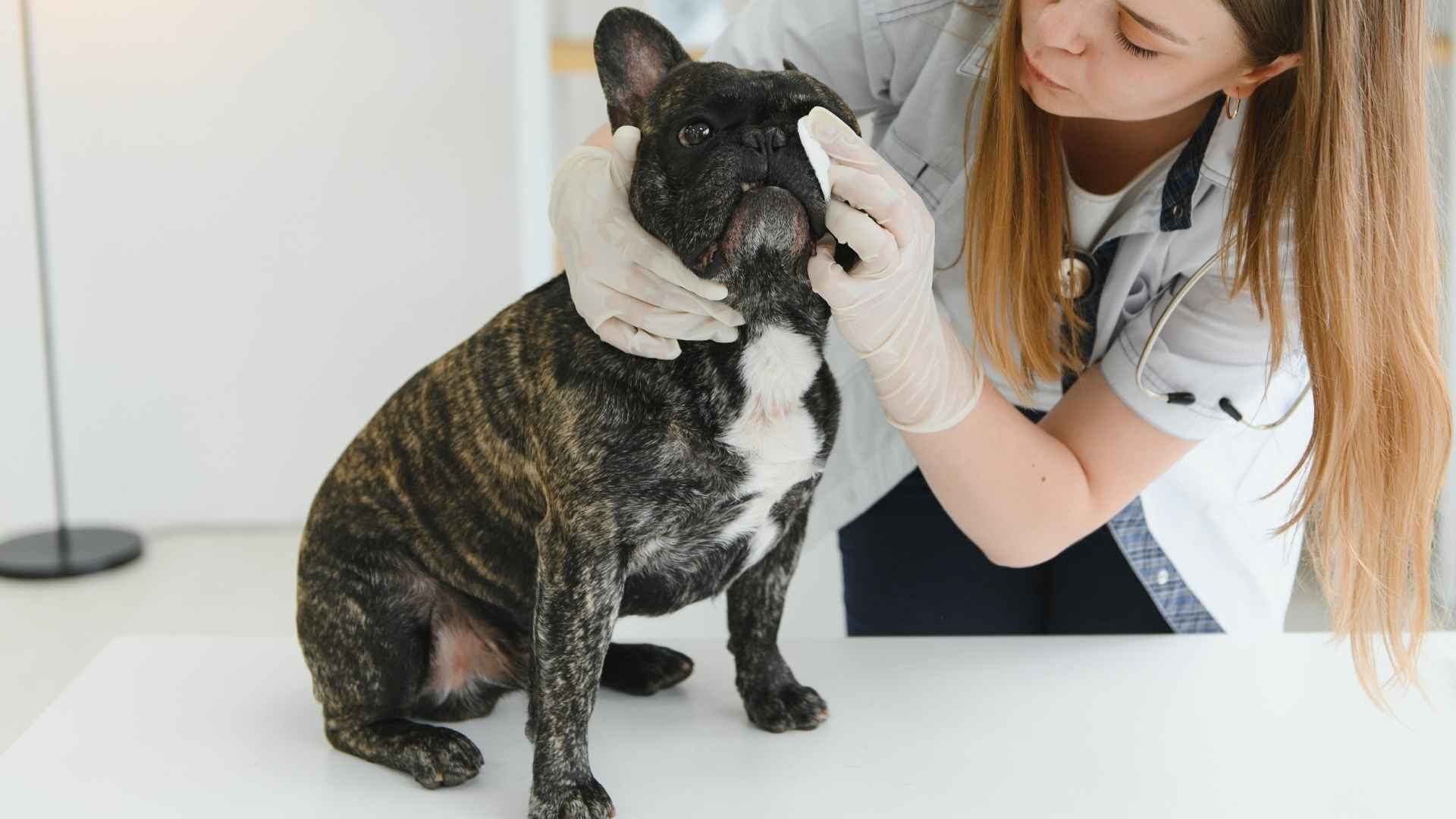Most of the pet owners understand the health issues of their dogs, keeping an eye on the weight, coat, and teeth. But eyesight? That is not taken into account until something goes wrong with the eye. A dog may contract eye diseases secretly, which can lead to discomfort, vision loss, or even blindness (if not treated timely)
Many eye conditions in dogs are heritable, and as a result, some are more common in specific dog breeds. Some of the dogs display normal vision in daylight but have trouble seeing objects and people during the night and in dim environments.
However, progressive diseases of the lens can cause cataracts, a common canine eye condition. A cataract is an imperfection that causes partial or complete clouding or opacification of the lens, which prevents a clear image.
In this article, we’ll review some of the most common eye conditions and the breeds most likely to be impacted by them.
Dog Breeds Prone To Eye Conditions
1. Siberian Husky
Common Eye Issues: Progressive Retinal Atrophy, Corneal Dystrophy, Cataracts
The Siberian Husky is a beautiful, lively dog breed that is known for its strong stamina. They are free spirits and have steely blue or bi-colored eyes. These enchanting eyes are prone to several diseases. Huskies have inherited tendencies to eye problems. The worst of which is juvenile cataracts. It causes the clouding of the lens and hinders the view. It is often seen at an early age.
Three eye conditions are so common that Huskies are predisposed to various genetic eye issues, including inherited juvenile cataracts, corneal dystrophy, and progressive retinal atrophy.
Corneal dystrophy is a disorder that leads to opacity or crystallization in the cornea. Although it does not cause blindness. But it creates a big impact on the eyesight and comfort.
Another eye issue is progressive retinal atrophy (PRA), from which Huskies usually suffer. This leads to night blindness and ultimately complete blindness.
2. Great Dane
Common Eye Issue: Entropion, Cherry eye
Great Danes are reputed to be large and polite, loving dogs. However, together with their massive frame, they are also prone to some significant health conditions, such as eye ailments, especially Entropion.
It is a disease in which the eye turns inward. And the eyelashes rub against the eye, bringing irritation, hurting, and even ulcers of the cornea.
According to PetMD the dog eye infections can affect the eyelid, the conjunctiva (pink part inside the eye), or the eye itself. They can be caused by bacteria, viruses, or fungi.
3. American Cocker Spaniel
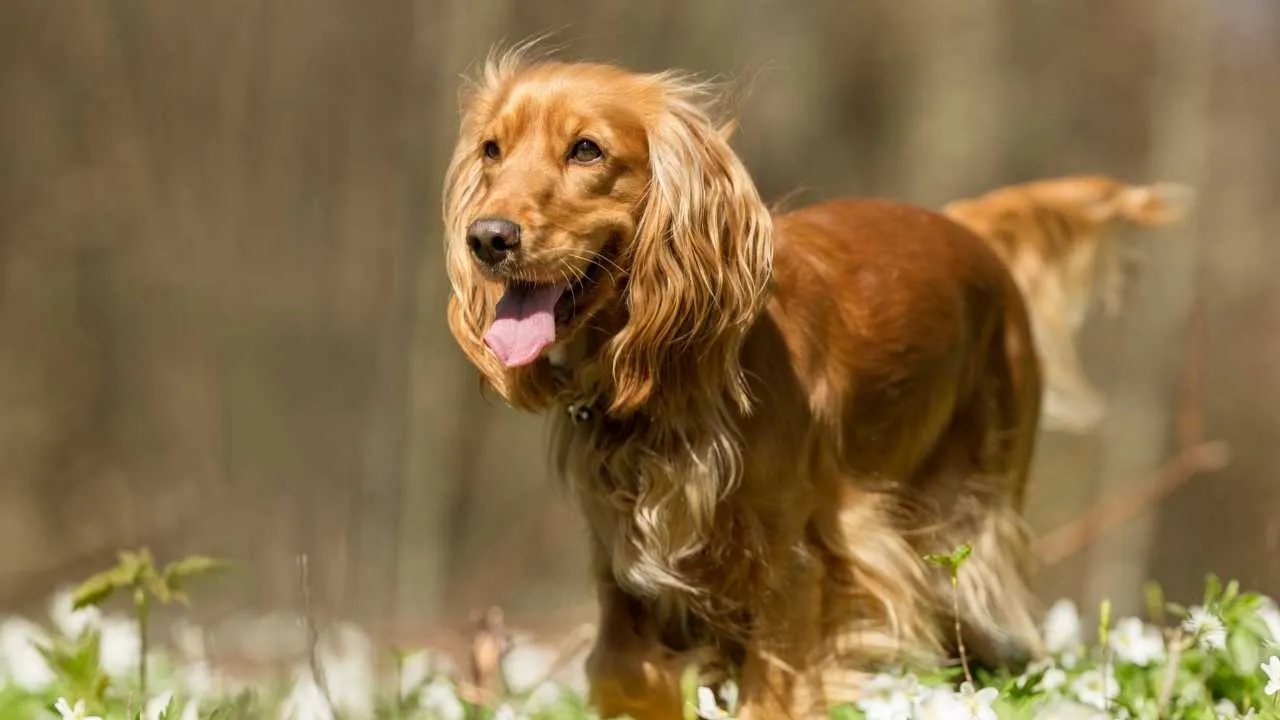
Common eye problems: Cataracts, Glaucoma, Progressive Retinal Atrophy
The American Cocker Spaniel is a sweet, lovable, small-sized dog that has big eyes and small ears. The problem is that their eyes also have a range of inherited illnesses. The most frequent stems from cataracts, where the lenses of the eyes become cloudy and thus might bring about partial and complete blindness if they are not treated or managed properly.
Purina states that Progressive retinal atrophy is a condition in American Cocker Spaniels in which the cells in the pup’s retina develop abnormally, eventually leading to blindness.
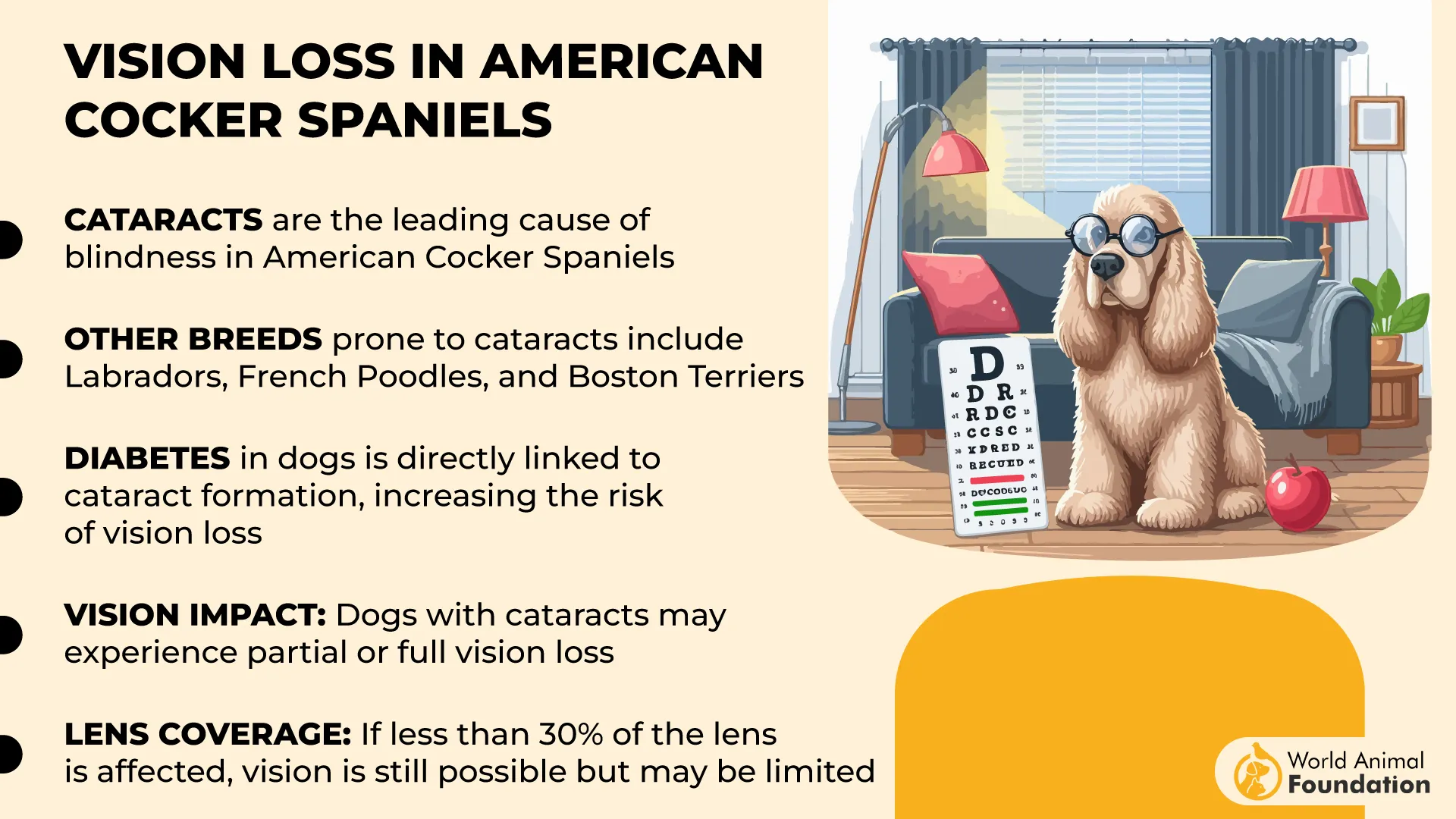
This is an inherited disease, which means puppies are already born with it and there’s nothing an owner can do to prevent its onset. This underlines the importance of health testing before breeding.
4. Labrador Retriever
Common Eye issues: Retinal dysplasia, Cataracts, Progressive Retinal Atrophy
Labrador Retrievers are the most popular dog breed in America. They are a highly intelligent dog breed that is great with families and kids. Yet their fame does not save them from the genetic issues.
Labrador Retrievers are genetically predisposed to progressive retinal atrophy, or PRA. This inherited condition is a group of degenerative conditions that affect the two main photoreceptors. It is a painless eye condition that causes the retina (i.e., the cell layer that lines the eye’s interior back wall) to degenerate. It can lead to blindness.
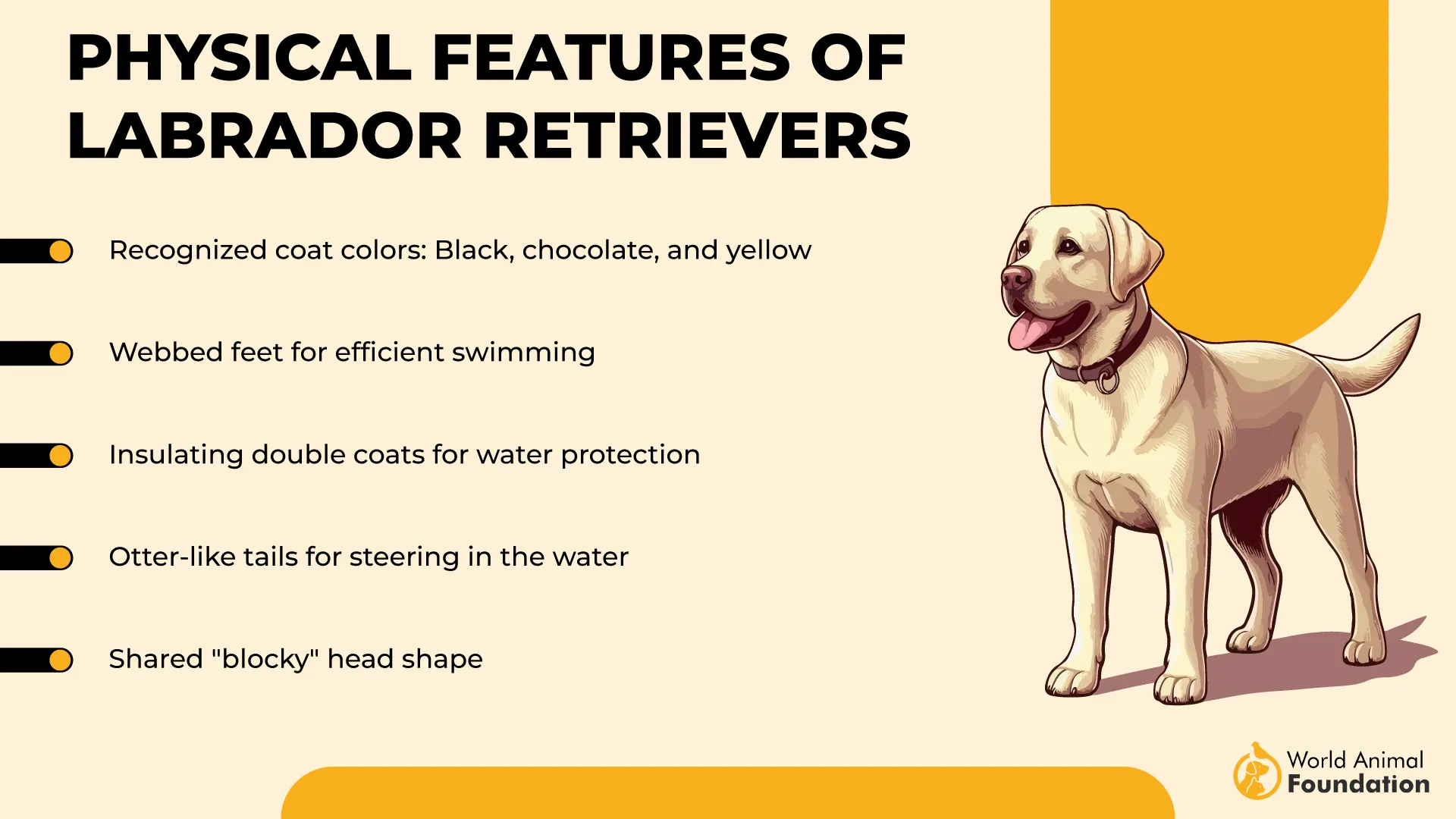
According to Britannica, these dogs are more solidly built than other retrievers and with shorter legs. Their distinctive features include an otterlike tail, thick at the base and tapered toward the end, and their short, dense coat of black, brown (“chocolate”), or yellow.
5. Poodle

Common Eye issues: Progressive Retinal Atrophy, Cherry eye, and Corneal ulcer
Standard miniature and toy breeds are described as smart, graceful, and hypoallergenic dog breeds. Dogs with long hair on and around their faces, such as Sheepdogs, Poodles, and Maltese, can be more at risk of eye infection and irritation. The canine lifestyle also inclines dogs to injuries and infections.
Regrettably, they also tend to develop a number of hereditary eye disorders, as
Glaucoma
Conjunctivitis
Cataracts
Progressive retinal atrophy
Cherry eye
Glaucoma occurs due to the rise of pressure within the eye that results in serious pain or blindness. They also suffer from the tear duct problem, which is a common symptom of overflow of tears due to the eye discharge. Another genetic issue is the Progressive retinal atrophy that leads to total blindness.
According to WebMD, dogs’ eyes will make tears when irritated to flush away anything harmful. When the eyes are continually irritated, this can lead to chronic tearing that produces stains.
Conditions that might irritate the eye include dog eye infections, glaucoma, eyelash or eyelid problems, and corneal ulcers/scratches to the surface of the eye.
6. Collie
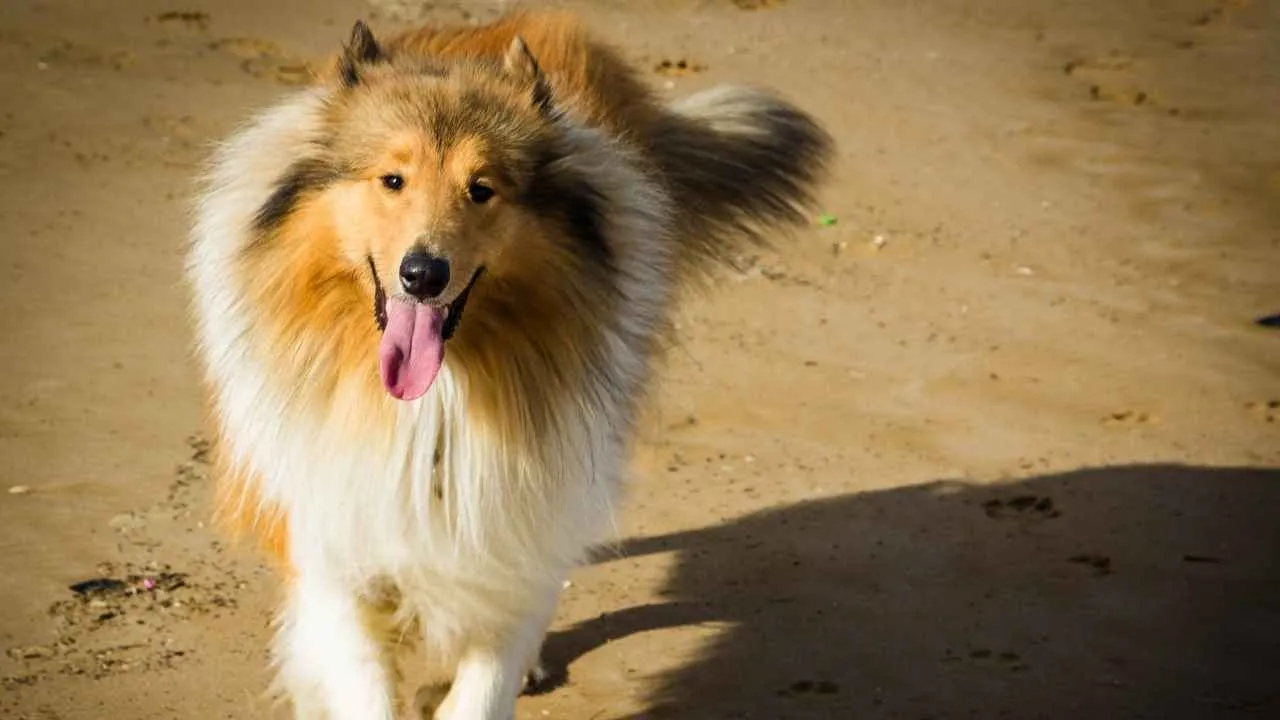
Common Eye issue: Collie eye anomaly (CEA)
Collies are a highly intelligent and elegant dog breed that has a great herding instinct. Nonetheless, Collie eye Anomaly (CEA) is a common eye defect that is a hereditary problem. That is caused by developmental deficiencies that will lead to the slight or total loss of visual abilities.
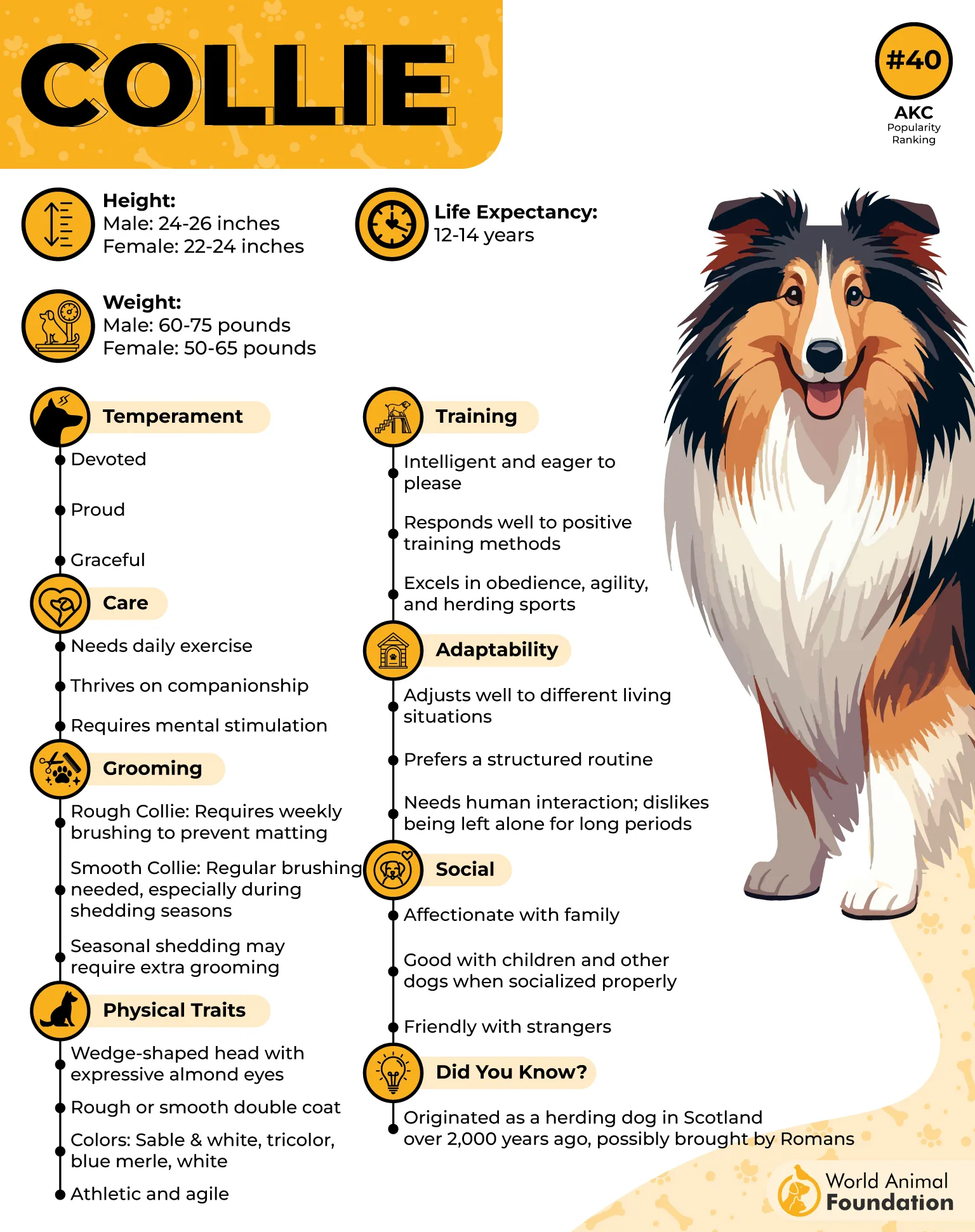
CEA is normally prevalent in the early signs among puppies. It can be diagnosed by genetic testing. In a few cases, the affected dogs lead normal lives without any vision impairment.
7. Boston Terrier

Common Eye issues: Corneal ulcer, Dry eye, Glaucoma, and Cataracts
Boston Terriers are adorable, funny dogs that have a short nose with protruding eyes that manage to make them look expressive. The American Kennel Club (AKC) states that the Boston Terrier is a lively little companion recognized by its tight tuxedo jacket, sporty but compact body, and the friendly glow in its big, round eyes.
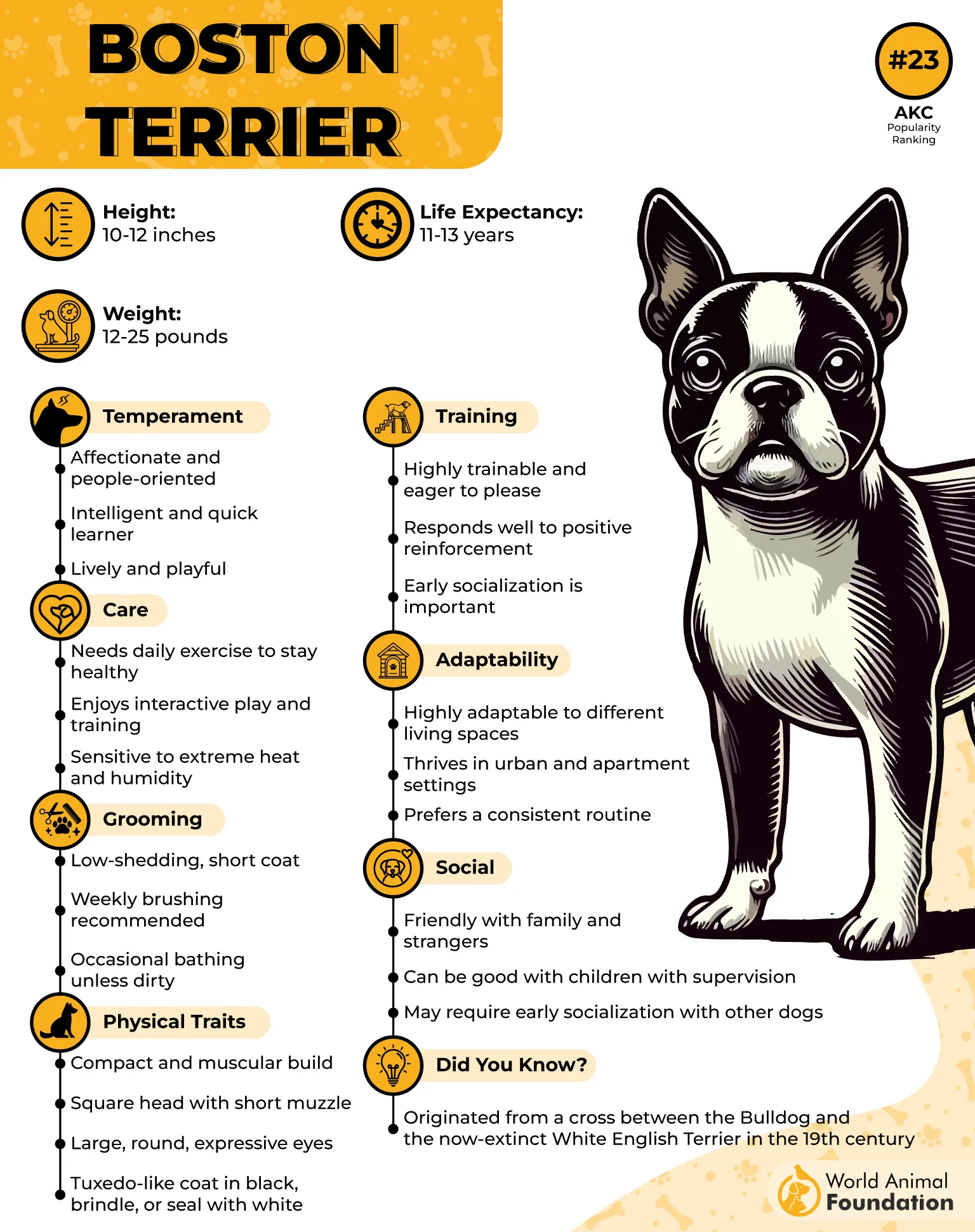
Dry eye is common in brachycephalic (flat-faced) dogs, such as Pugs and Boston Terriers, because they do not close their eyes completely.
Decreased tear production is typically due to destruction of the tear glands, either by an autoimmune disease or a nerve problem. This leads to the inflammation and irritation of the eyes.
Conclusion
While all dogs can develop cataracts, some breeds are more prone to this eye condition than others due to their genetic traits. A yearly examination by a board-certified veterinary ophthalmologist is recommended. This allows early detection of progressive eye diseases.
High blood pressure, a common problem in certain breeds, is a leading cause of retinal detachment and loss of vision, especially in older dogs.


